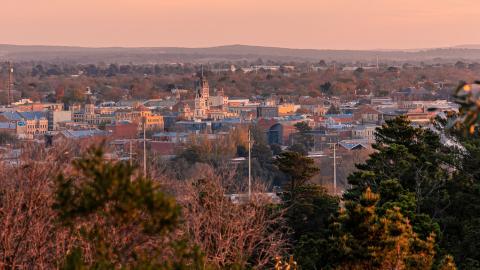

Life in Australia series
Life in Australia series
In the 1960s, the Australian government created Life in Australia as a marketing tool to sell potential 'New Australians' from Europe the idea of a prosperous, happy life down under.
Now restored in glorious 4K, all 12 films focus on our capital cities and regional centres. They follow the same formula, showcasing employment and industry, education, sport, health care, shopping, religion, night life, and art.
It is important to understand the context in which the films were made. It was the last years of the ‘White Australia’ policy, and the government wanted to attract (mostly British) migrants. Inclusiveness was not the goal, and anything that didn’t fit into the perfect postcard image was left out of these films.
Traditional gender roles determine how the members of the films' fictional families occupy their time: father was the head of the house, and although women studied and worked, they only did so until they were ready to become devoted housewives.
There are no Indigenous people in any of these films, at the time when Charles Perkins embarked on the Freedom Ride, and only a couple of years before the landmark 1967 referendum.
These films present carefully selected aspects of the Australian experience 50 years ago. They do not represent 100% of what life in Australia was, but they do capture the spirit of a nation aspiring to fulfil its potential.
The National Film and Sound Archive of Australia acknowledges Australia’s Aboriginal and Torres Strait Islander peoples as the Traditional Custodians of the land on which we work and live and gives respect to their Elders both past and present.


